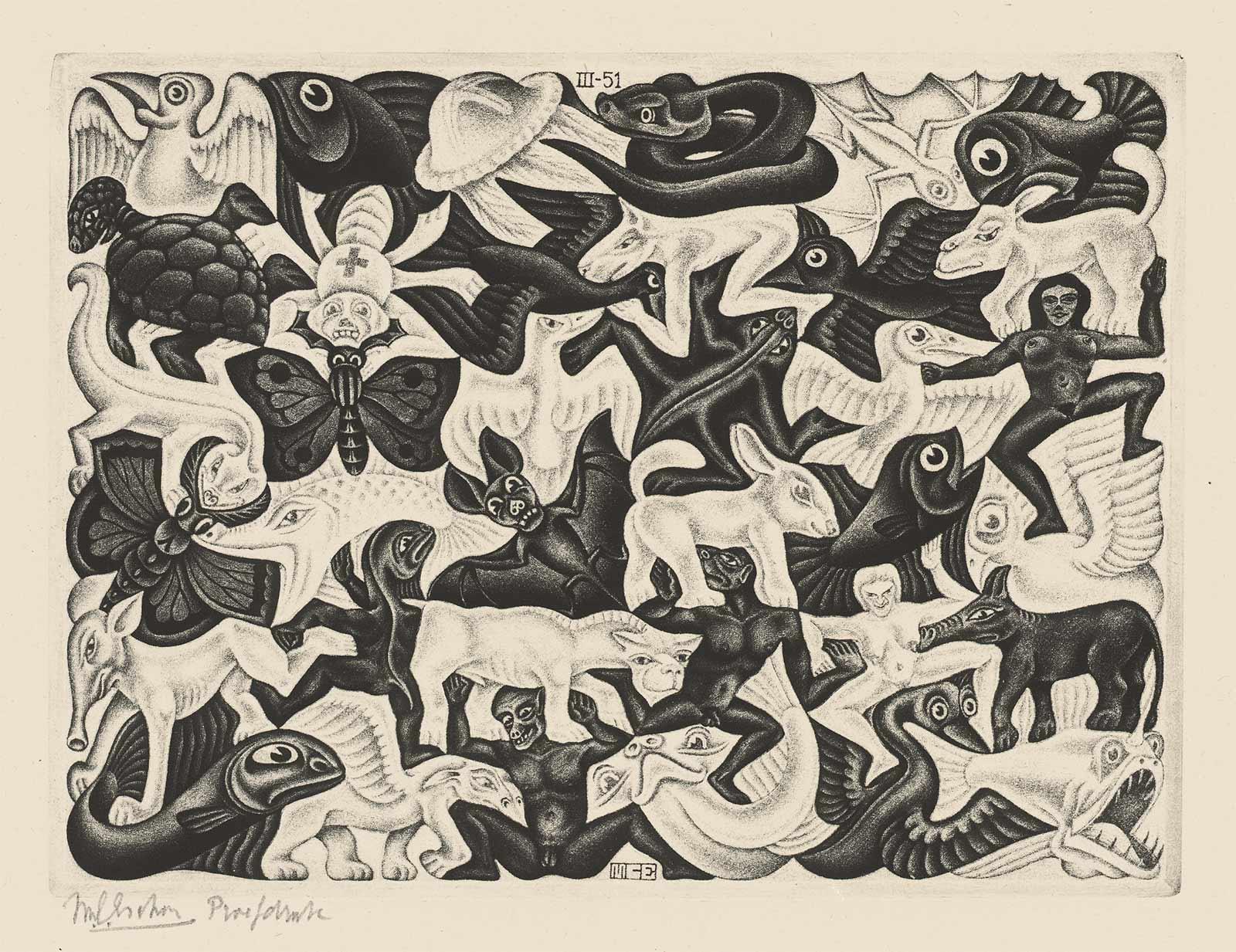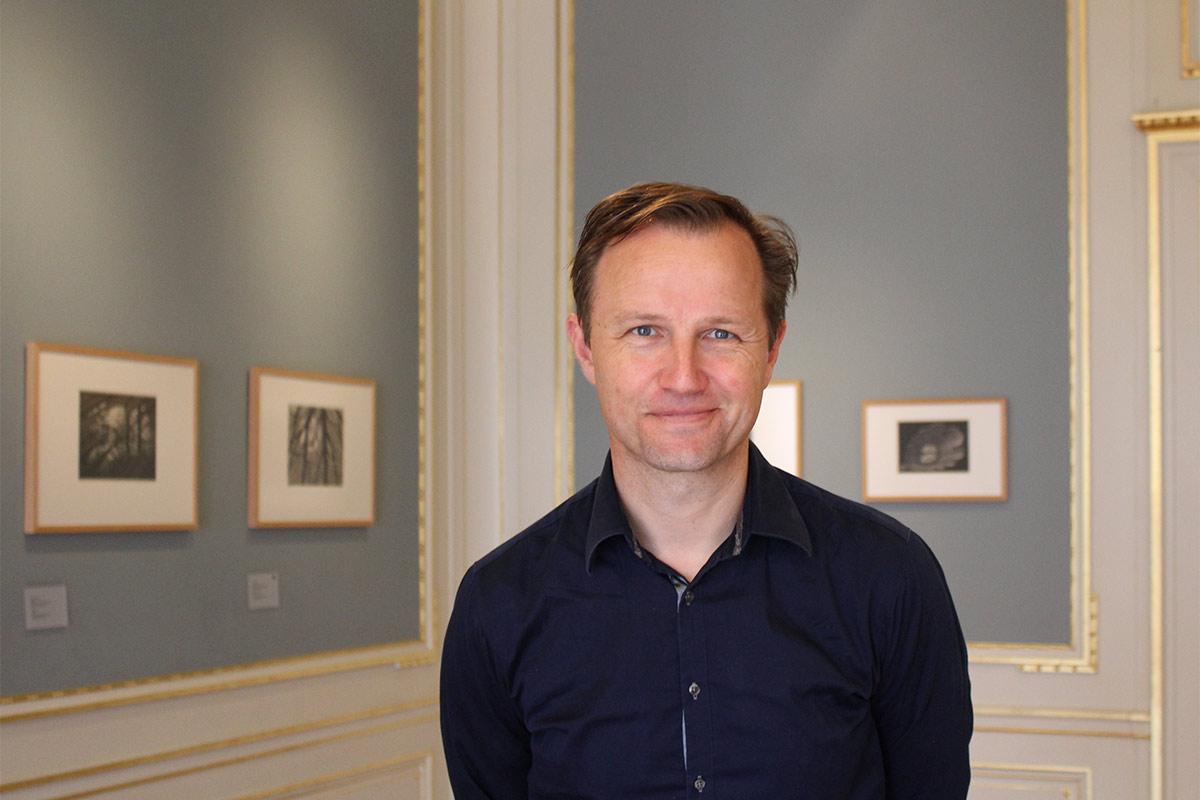

Since the Brexit referendum on 23 June 2016, the United Kingdom has been in a constant state of uncertainty about the future of the nation and its relationship with mainland Europe. Last Friday was B-day but even that deadline was not met. Theresa May, the prime minister who should have steered everything in the right direction, turned out to be the direct object of this confusion. Although the mood around Brexit is still very pessimistic, there is one group of professionals that is getting some fun out of it. For almost three years the cartoonists have been producing an inexhaustible stream of political prints on Brexit. And M.C. Escher has been playing a notable role in this.
After all, it turns out that a number of his prints can serve as a wonderful metaphor for this confusion and for the continuous repetition of moves characterising the process. Relativity is perhaps the most obvious one. Escher himself described the labyrinth in which several realities co-existed as follows:
'The illustration involves three forces of gravity working perpendicular to one another. Three earth planes cut across each other at right angles, and human beings are living on each of them. It is impossible for two inhabitants of different worlds to walk or sit or stand on the same floor, because they have different perceptions of what is horizontal and what is vertical. Yet they may well share the use of the same staircase. On the top staircase illustrated here, two people are moving side by side and in the same direction, and yet one of them is going downstairs and the other upstairs. Contact between them is out of the question because they live in different worlds and therefore can have no knowledge of each other’s existence.’
Perpetual Brexit
In the Brexit cartoons that have been made, Theresa May walks through those worlds. Looking for the exit and some understanding. She also symbolises the Leavers and Remainers. Both groups live in their own world in which little understanding exists for the reality of the other. In the third print, the labyrinth of Relativity symbolises the mind of Paul Dacre. This former editor of the Daily Mail campaigned long and hard against EU membership for years and saw the result of the referendum as his most important legacy.
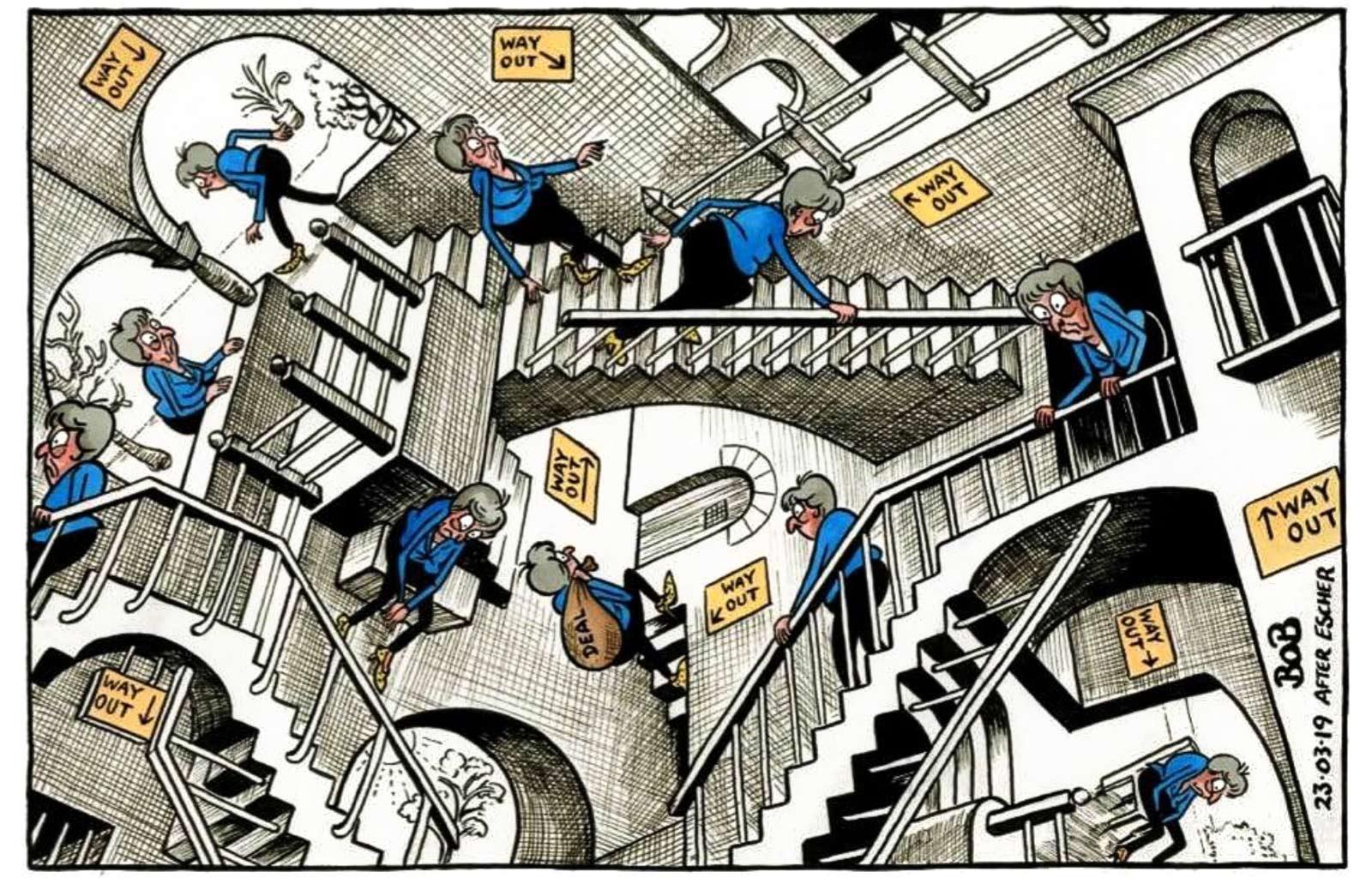
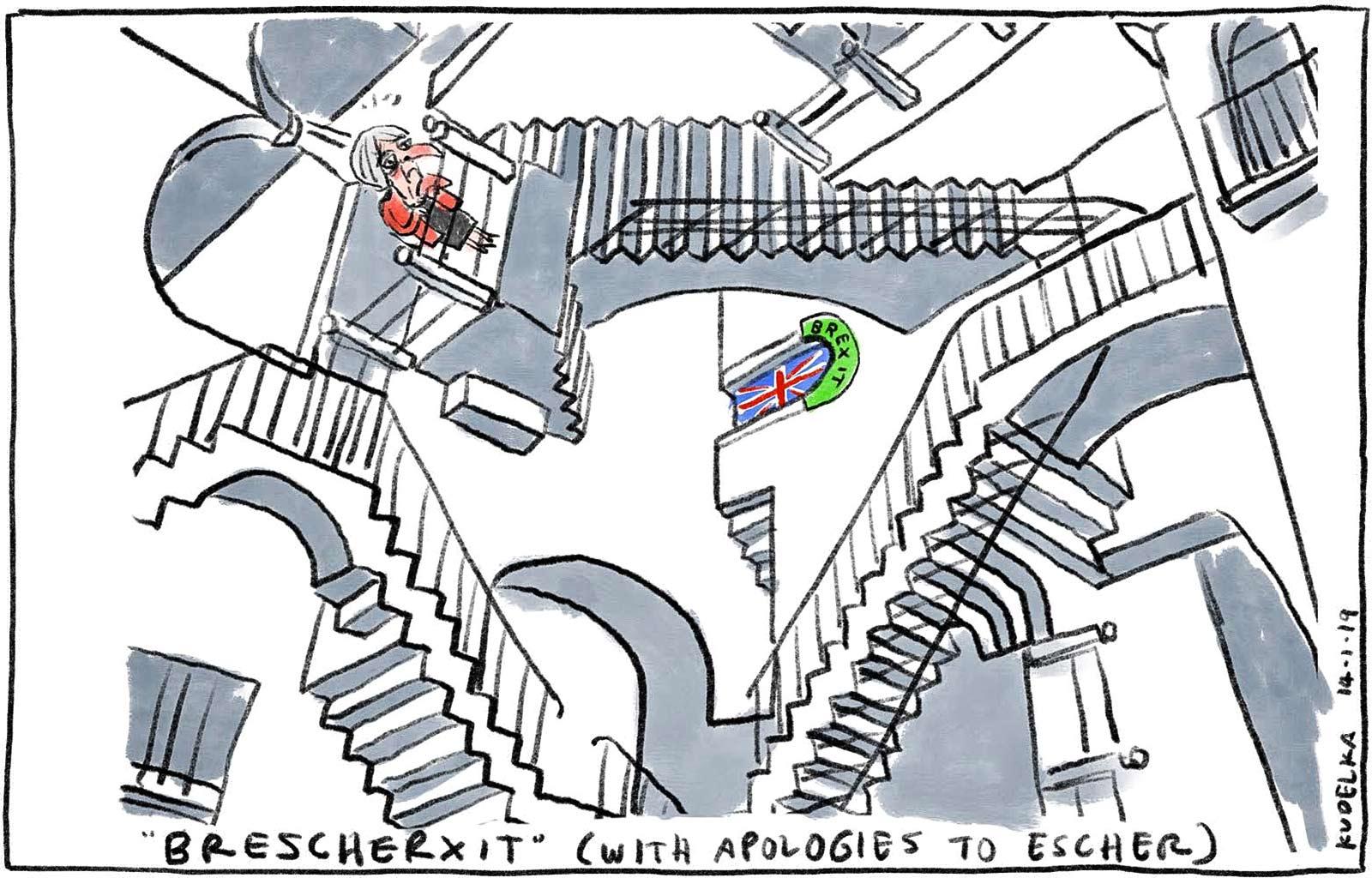
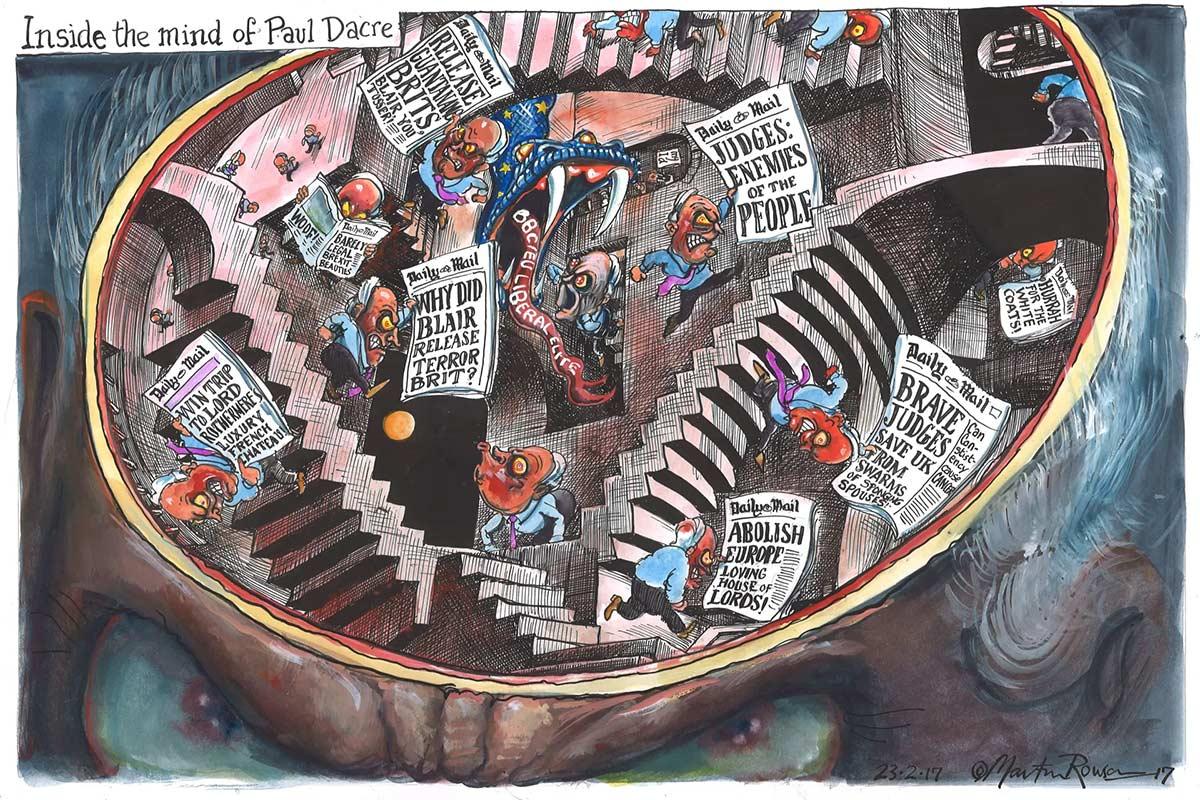
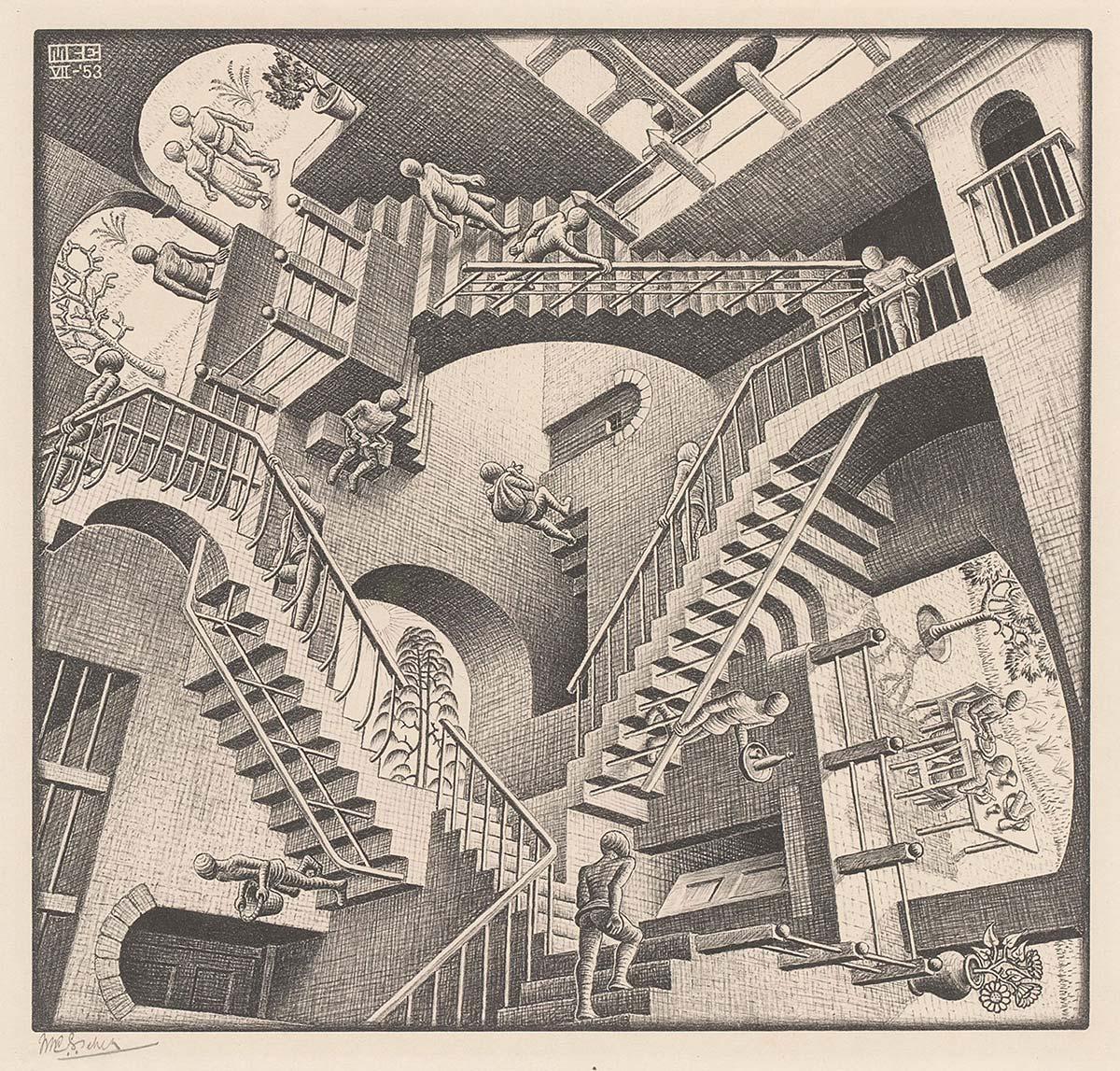
The other print that is repeatedly used by cartoonists is Ascending and Descending. The perpetual staircase on which both ascenders and descenders run their laps without ever getting anywhere is a metaphor that is possibly even stronger than the one in Relativity. Escher was inspired by the British (yes, indeed) mathematicians Lionel and Roger Penrose, but it is mainly the lithograph that he made of it that has remained in the collective memory.
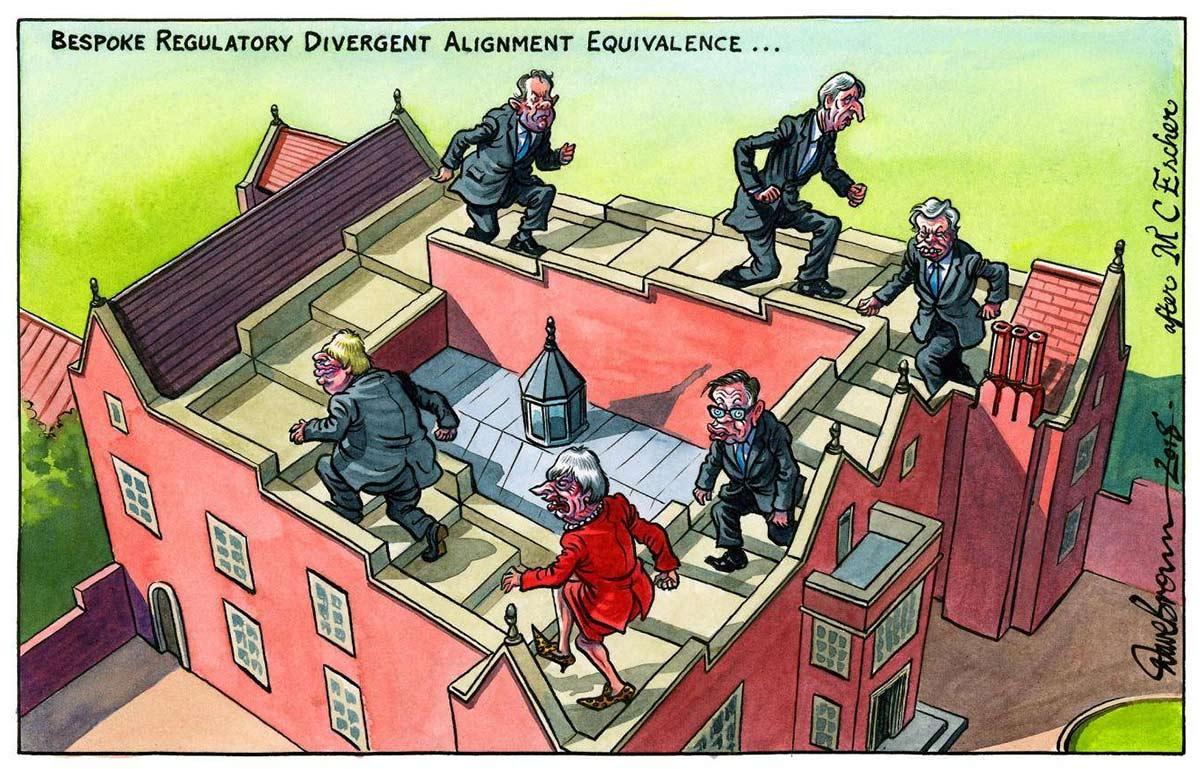
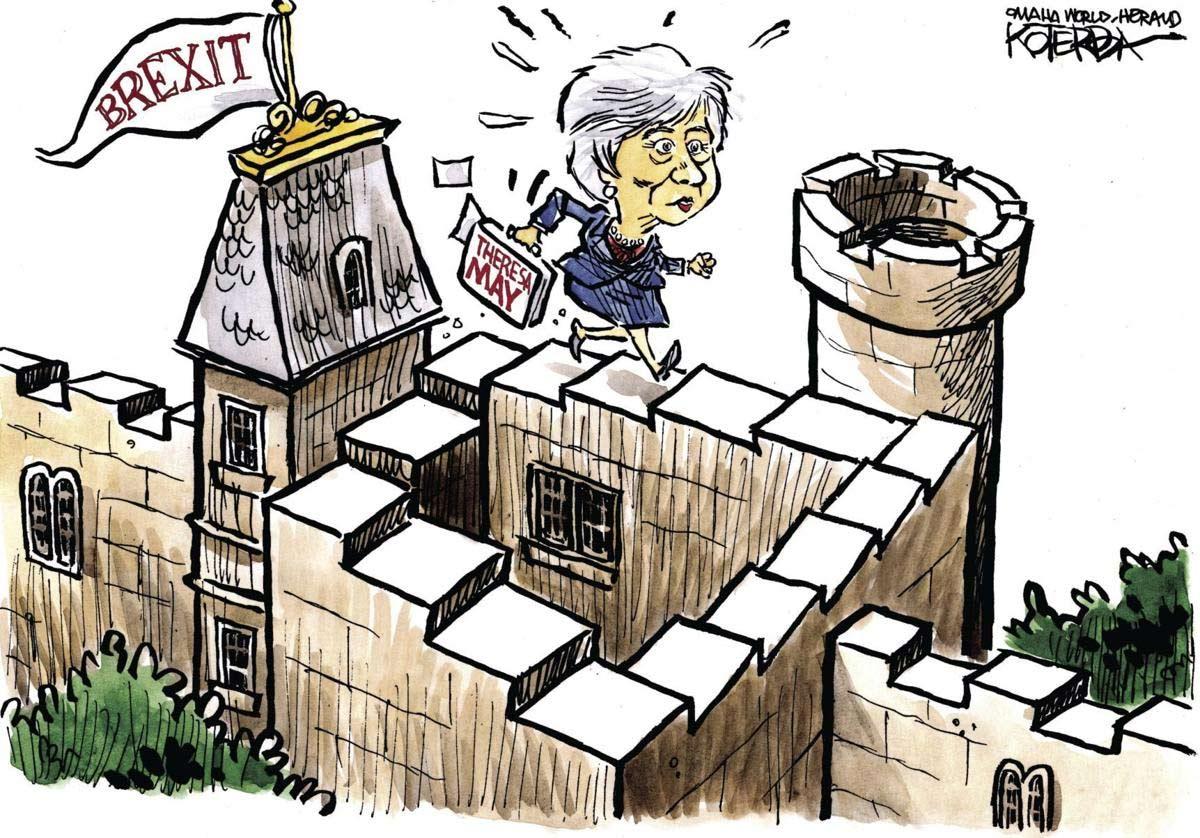
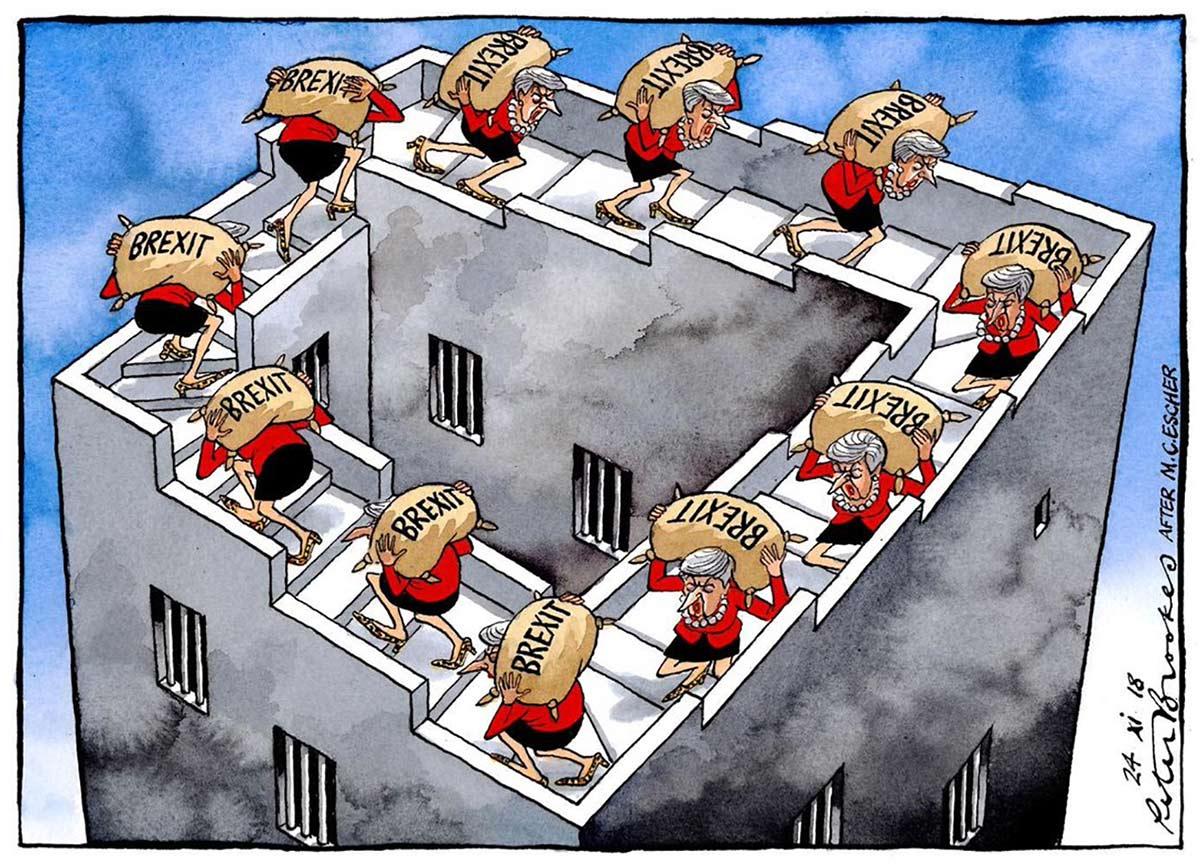
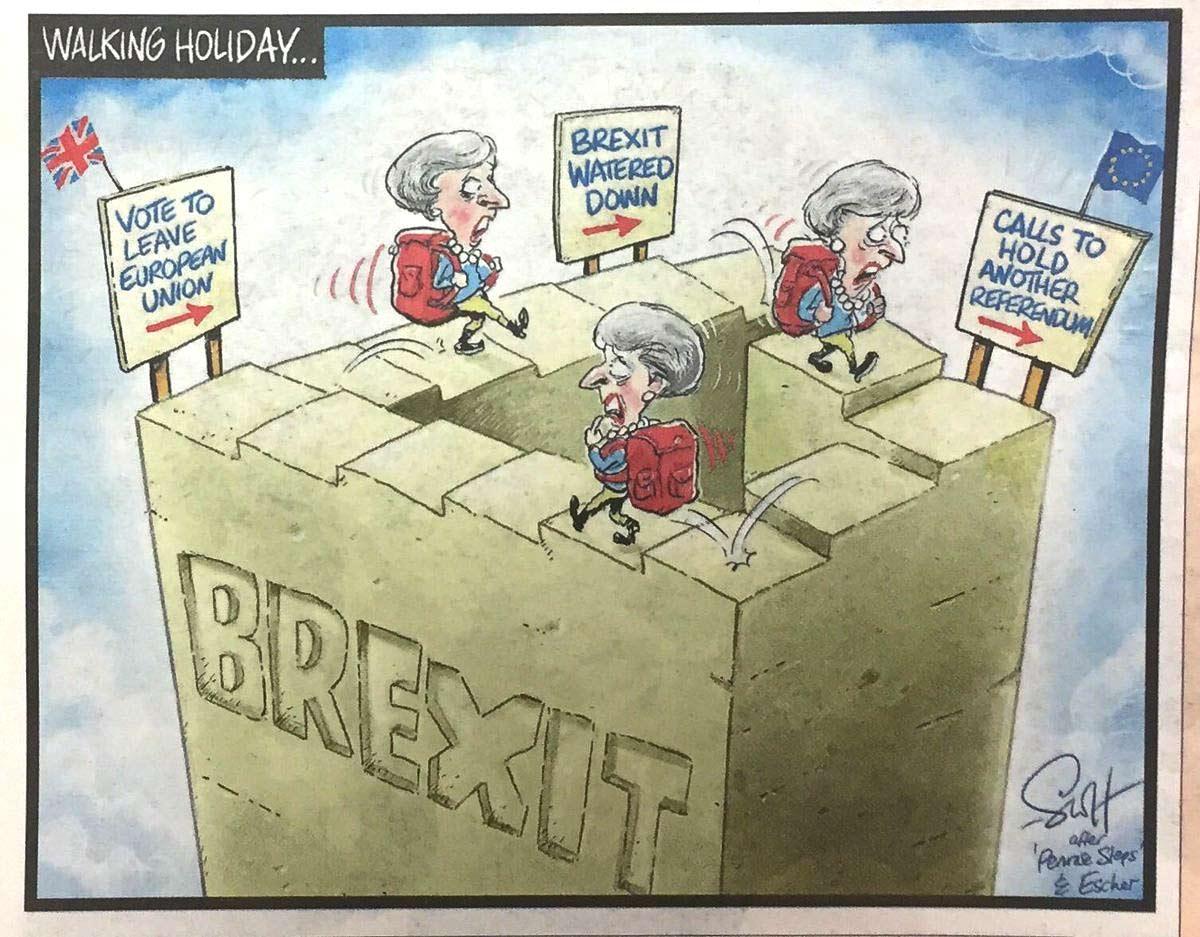
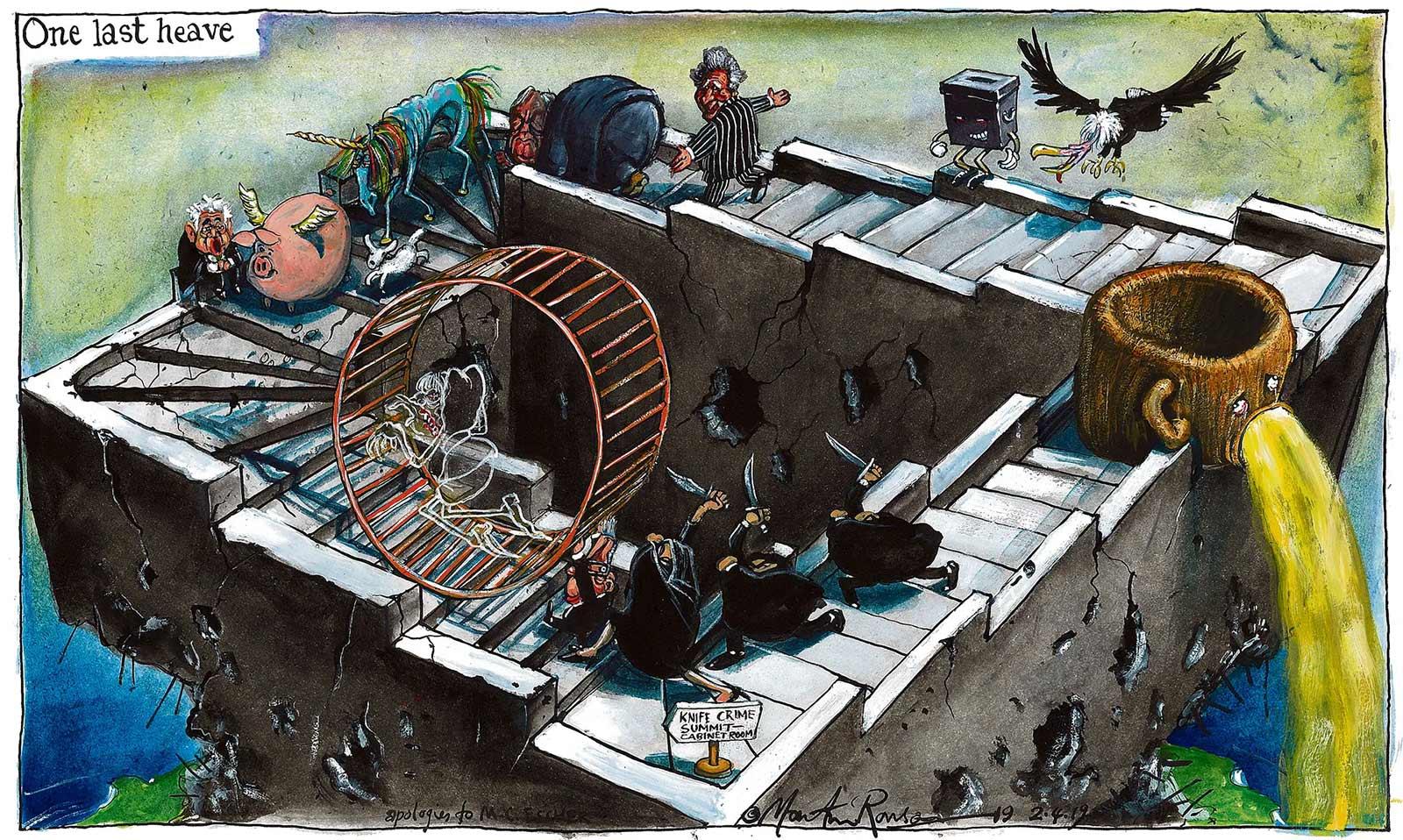
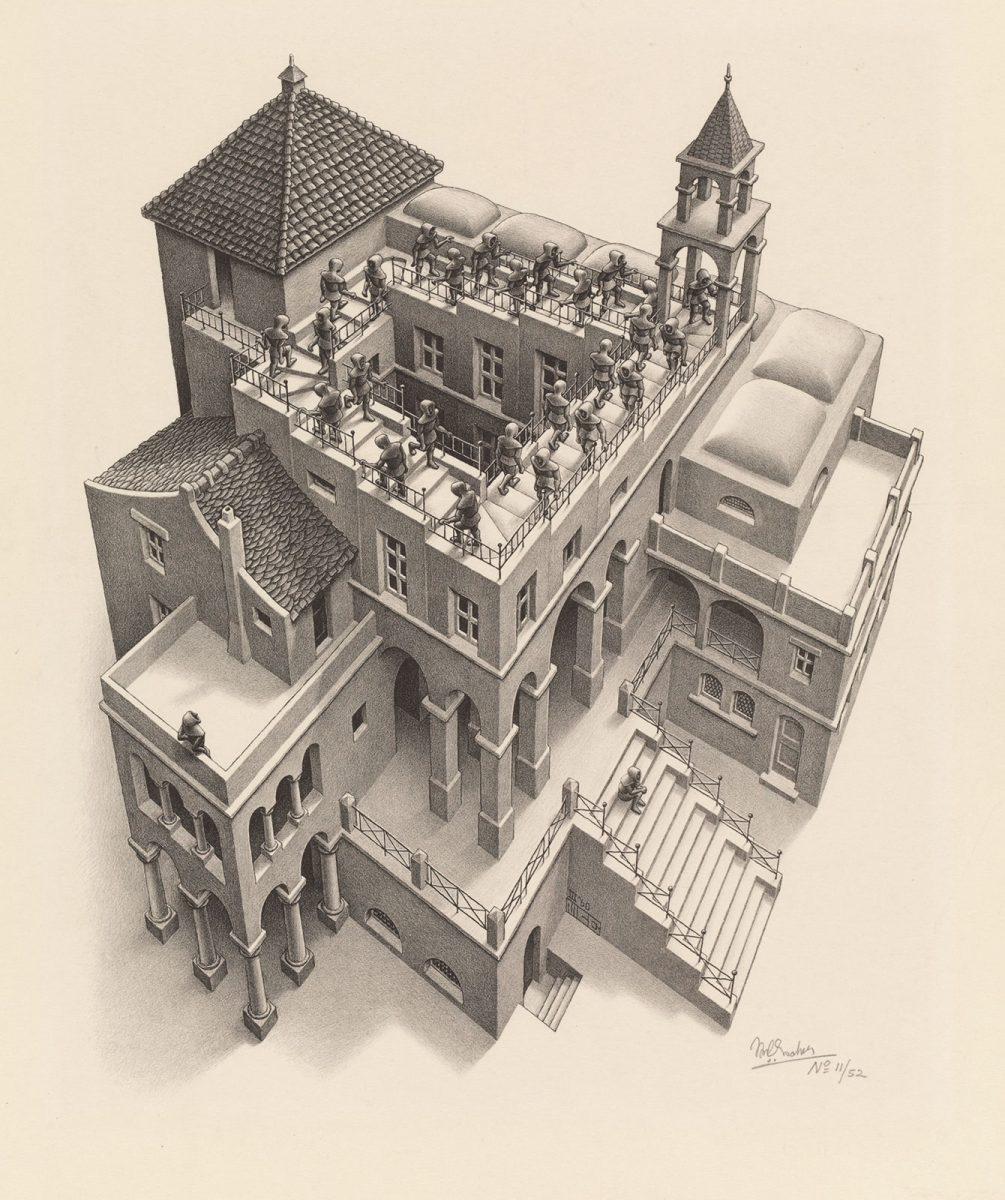
The third print is Möbius Strip, named after a mathematical principle that was first described in 1858, but which is still best known through Escher’s versions of it. Just like the stairs in Ascending and Descending, this path has no end at all. We hope that the British will be able to make up their minds soon.
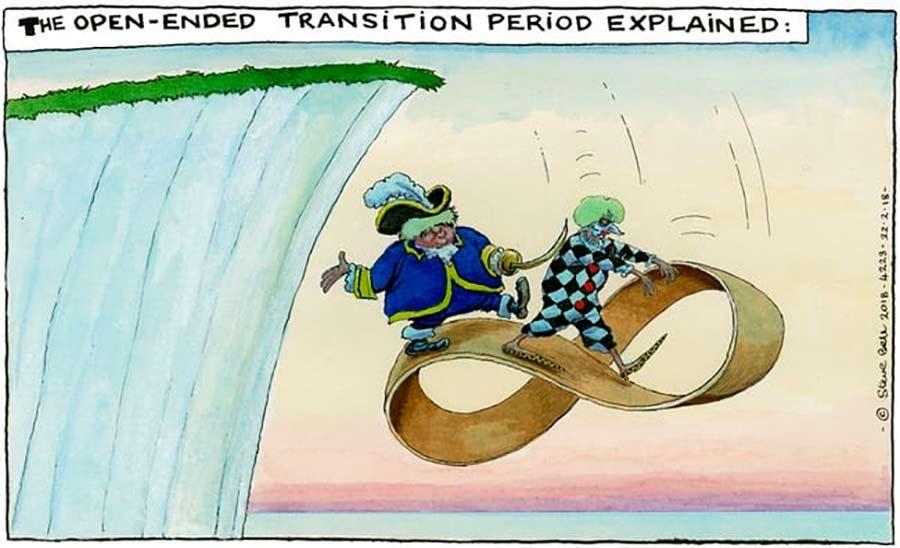
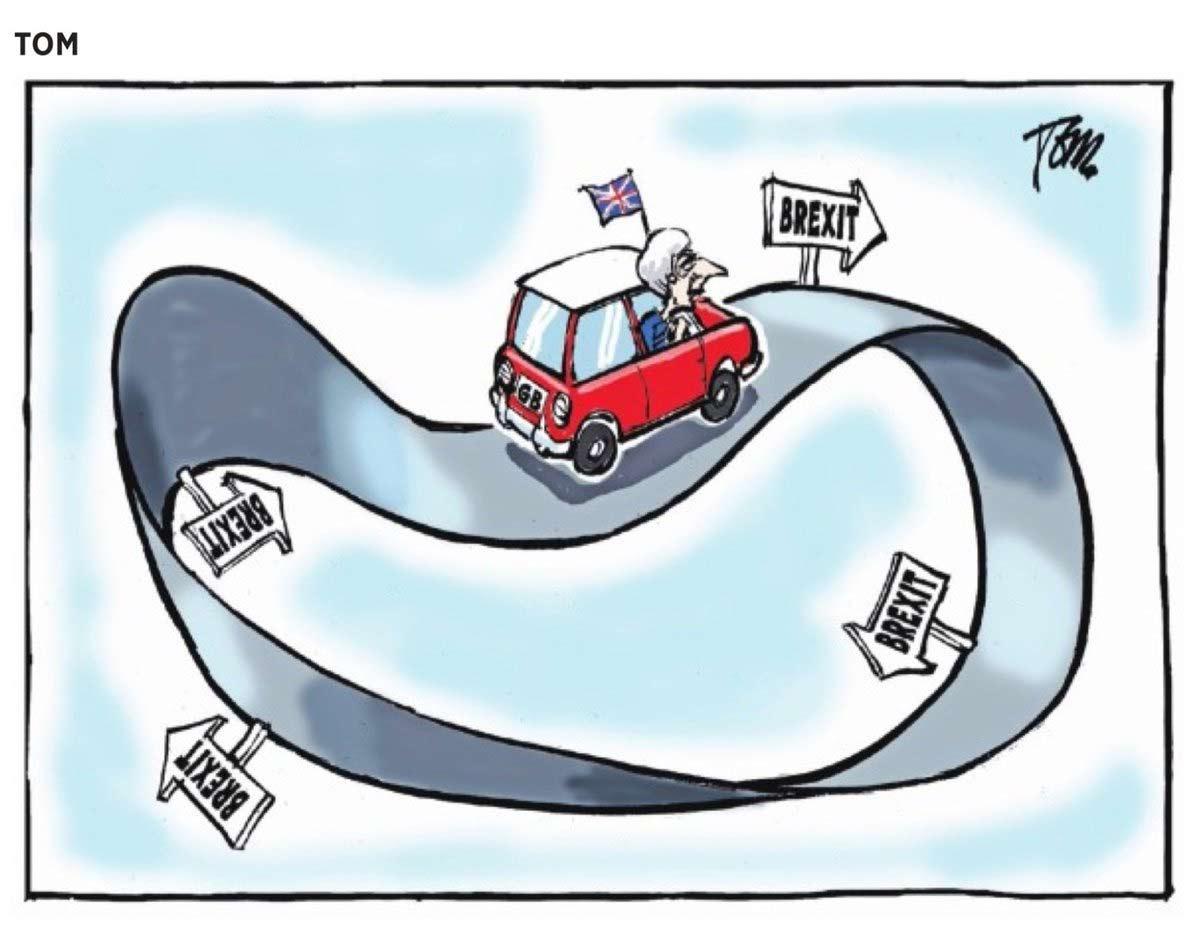

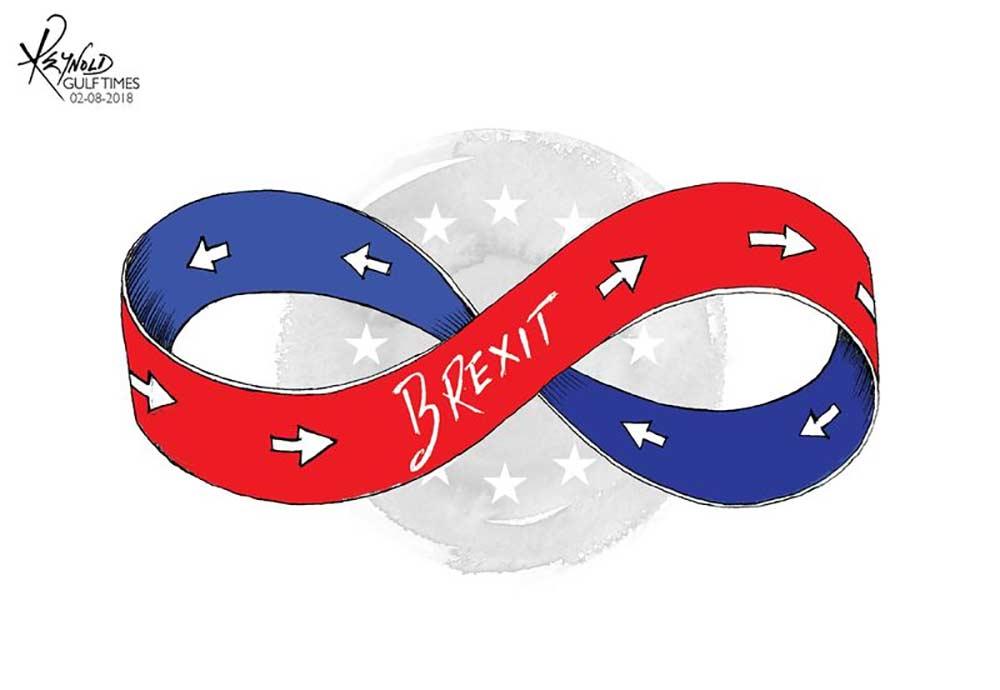
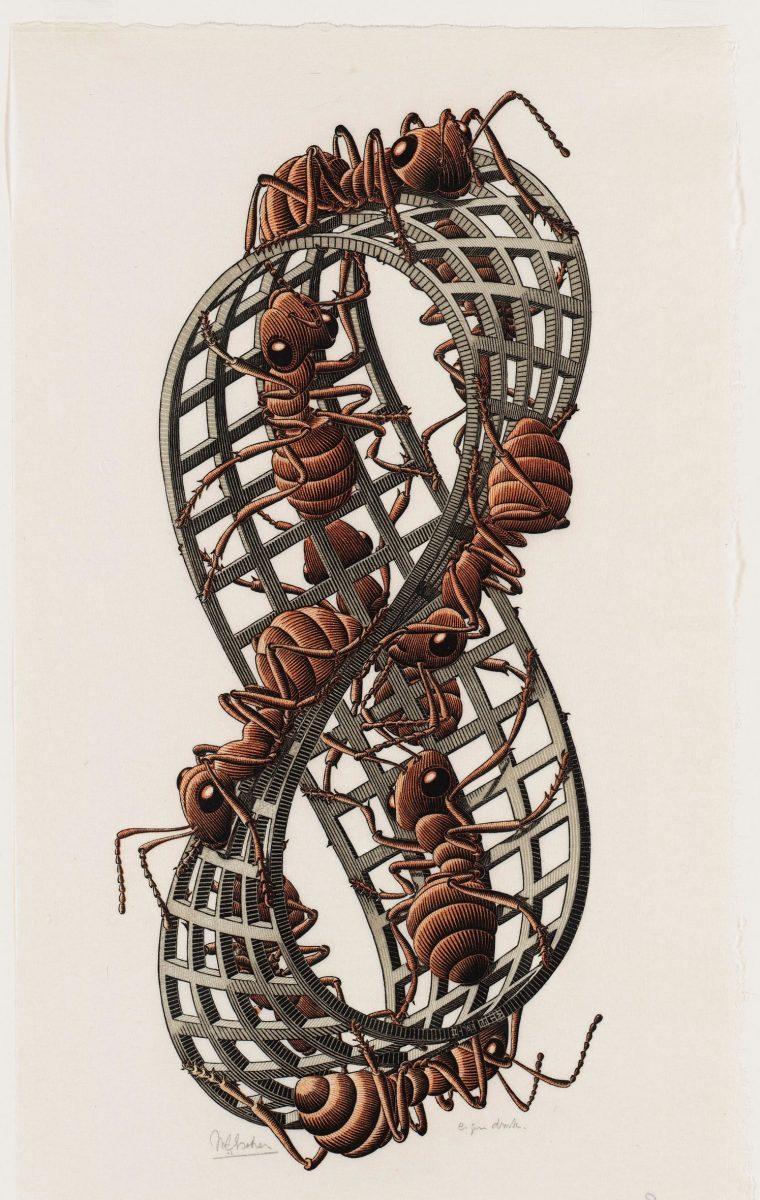
M.C. Escher, Möbius Strip II (Red Ants), woodcut in red, black amd grey-green, printed from three blocks, February 1963
More Escher today

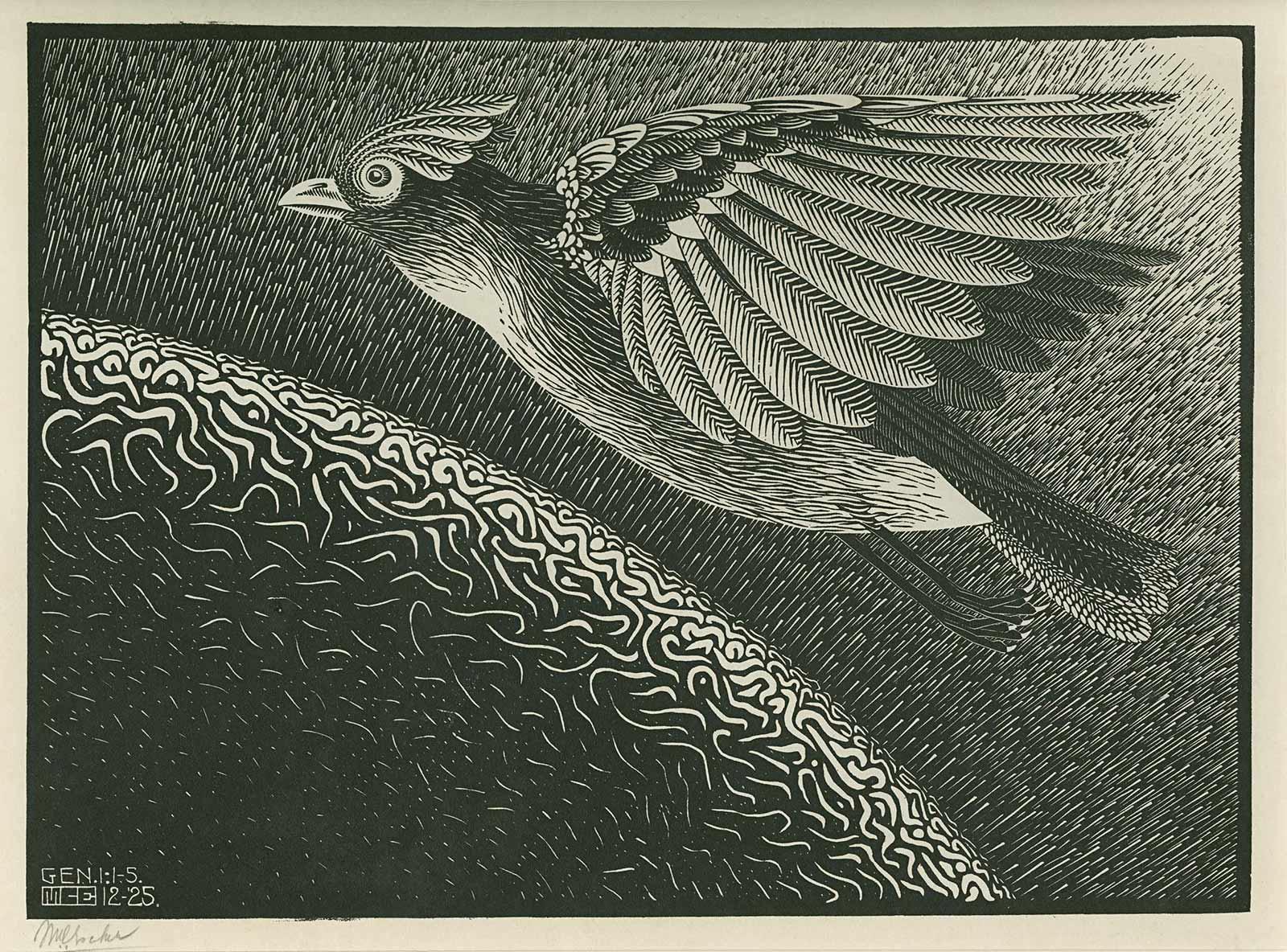
Pristine nature
